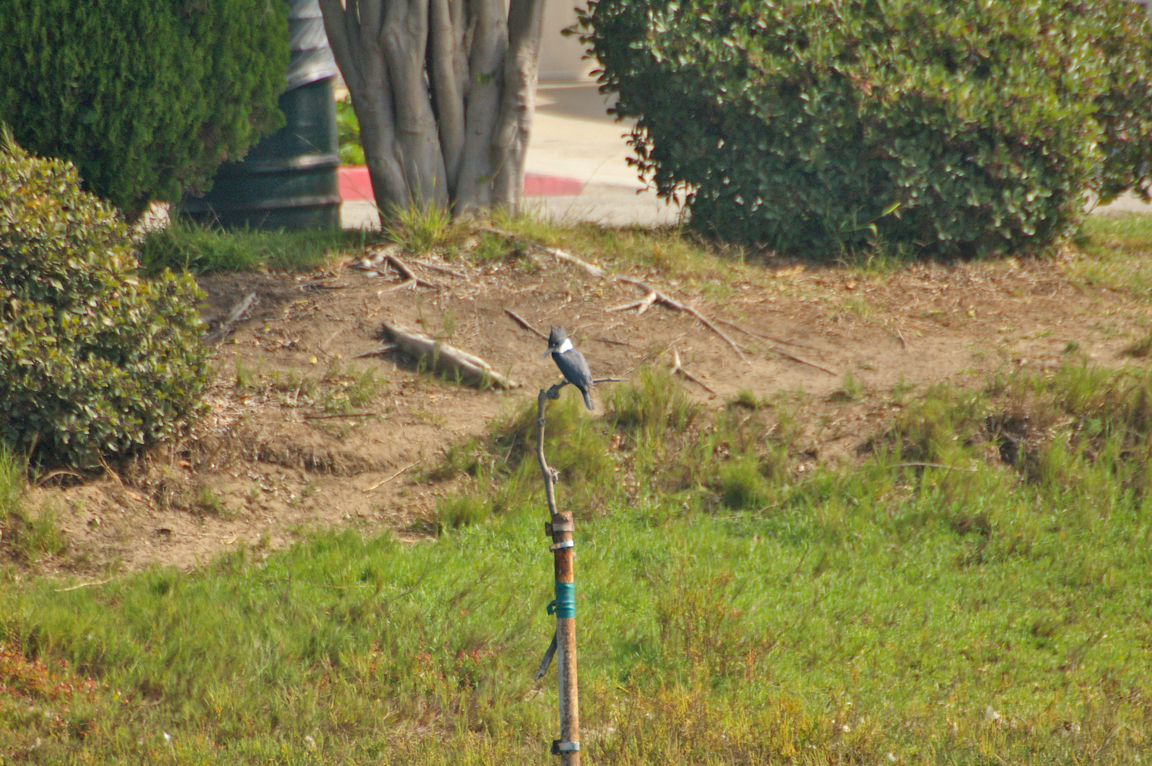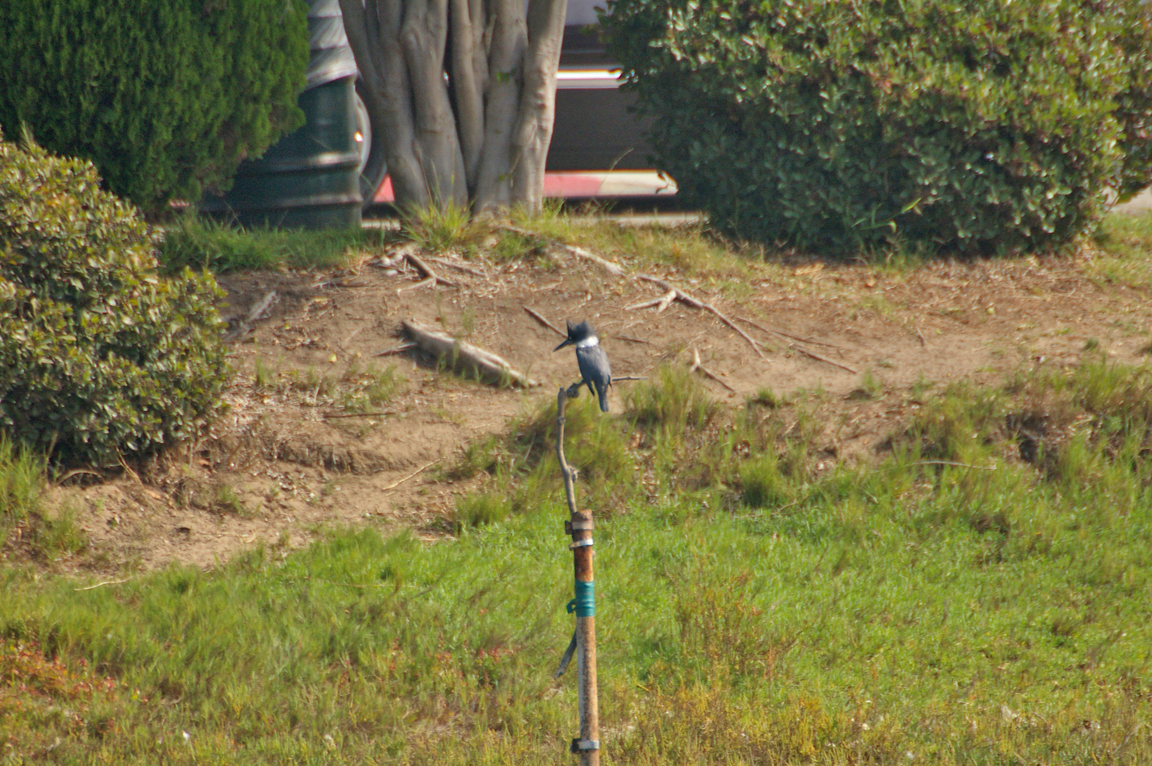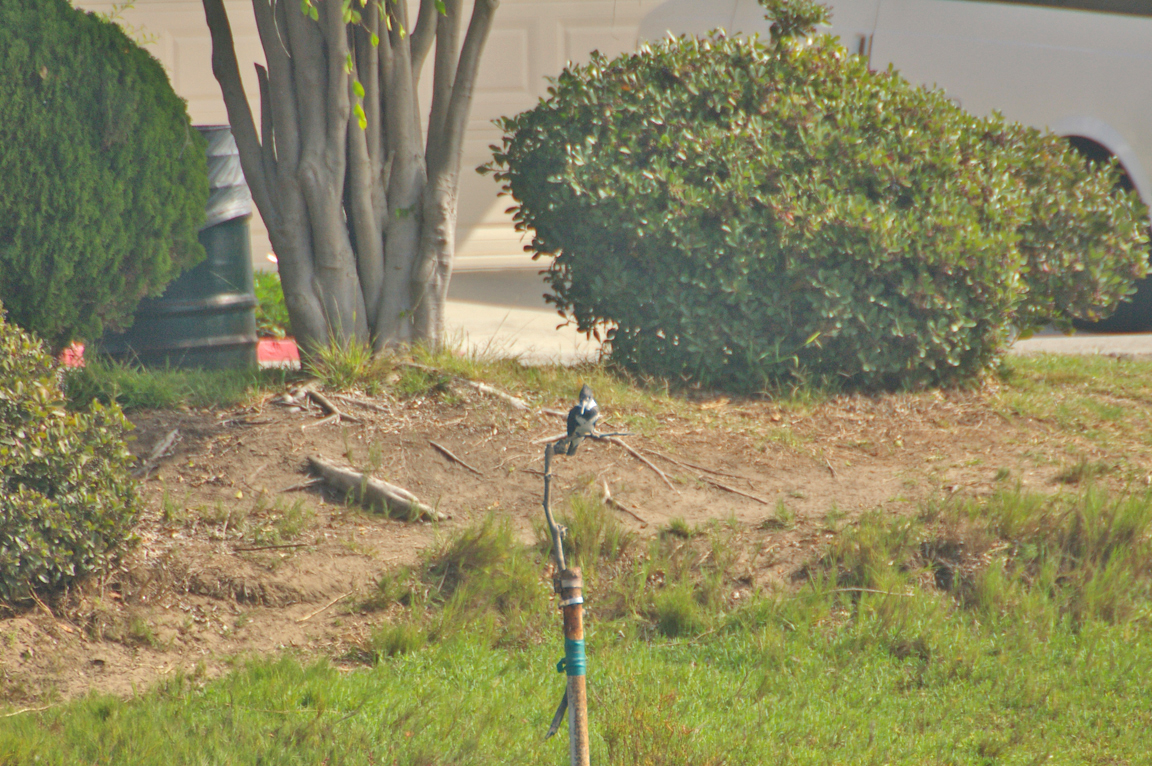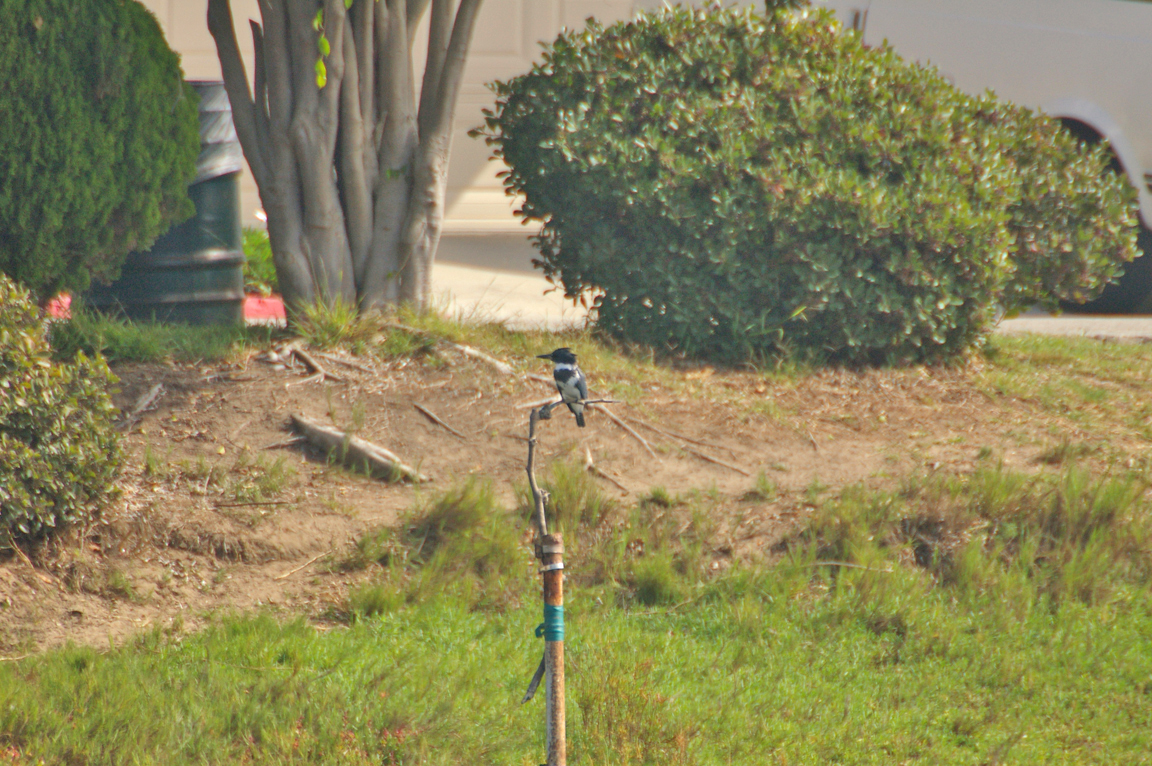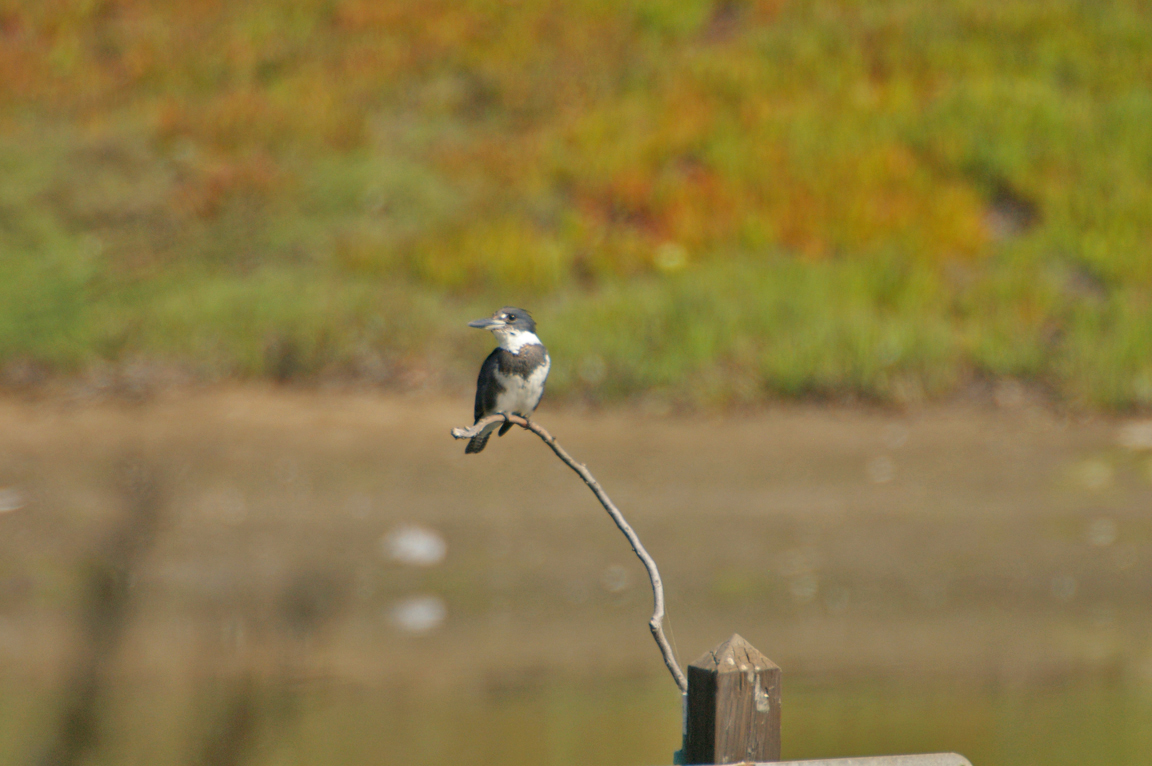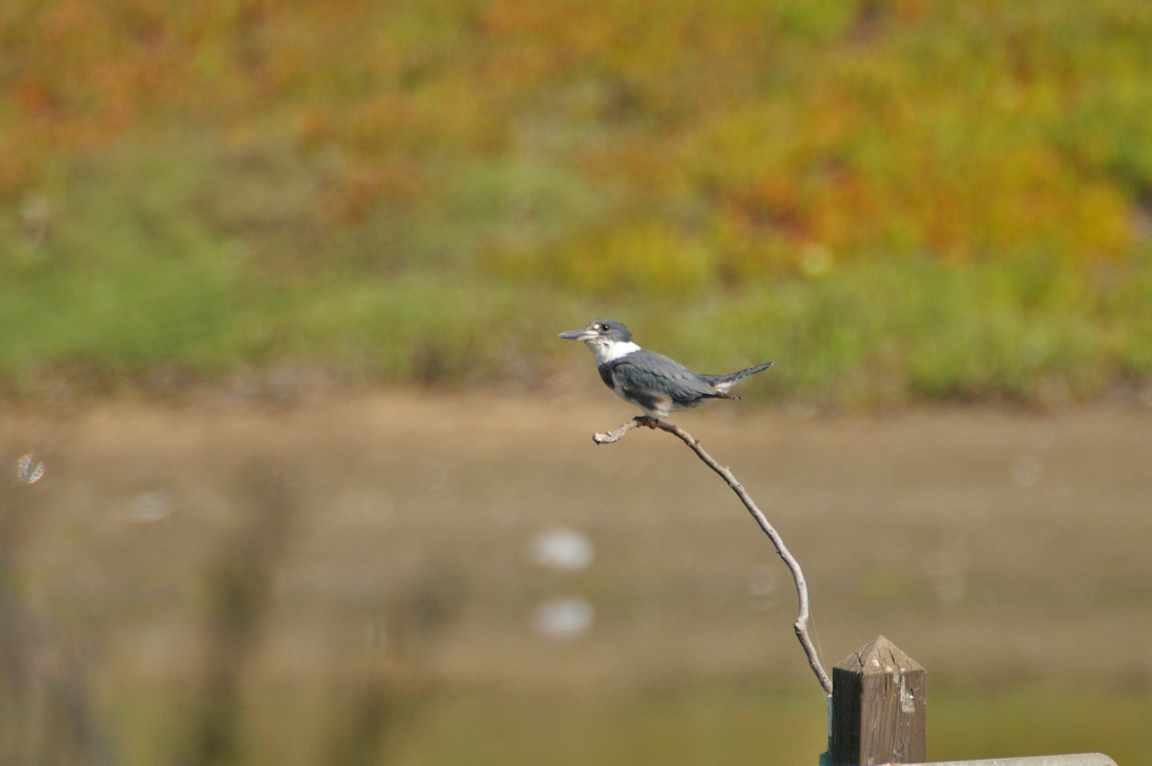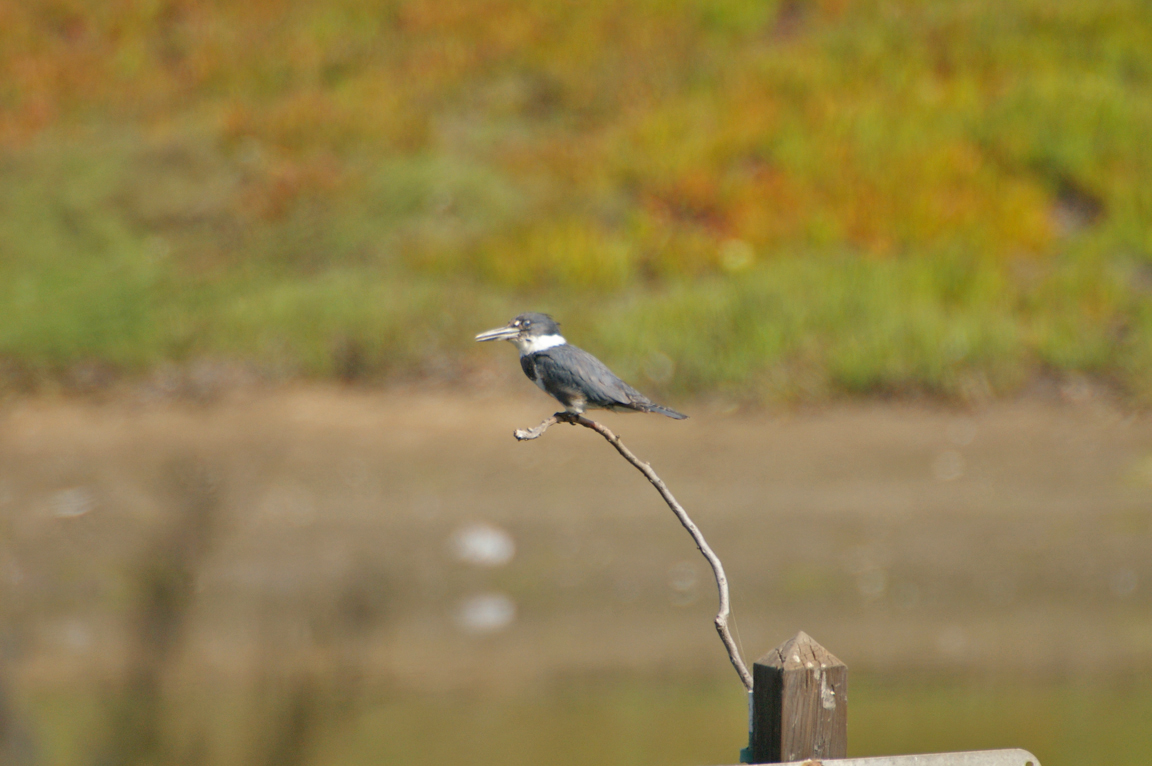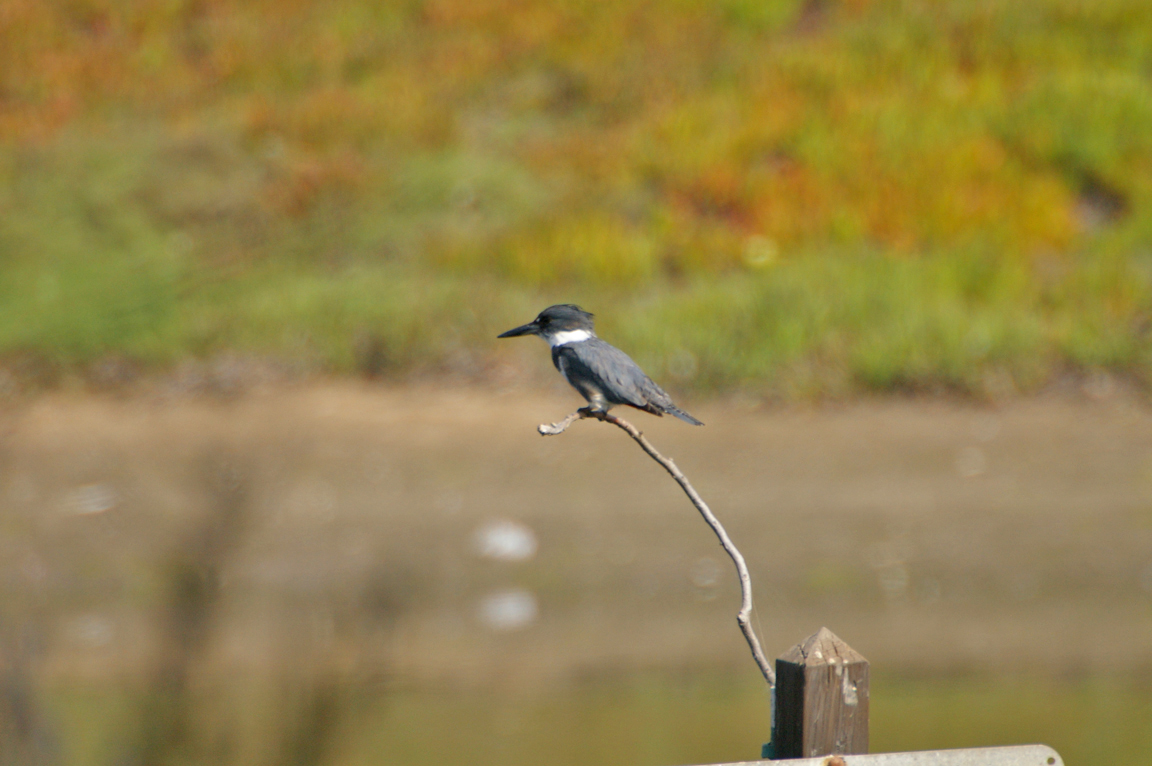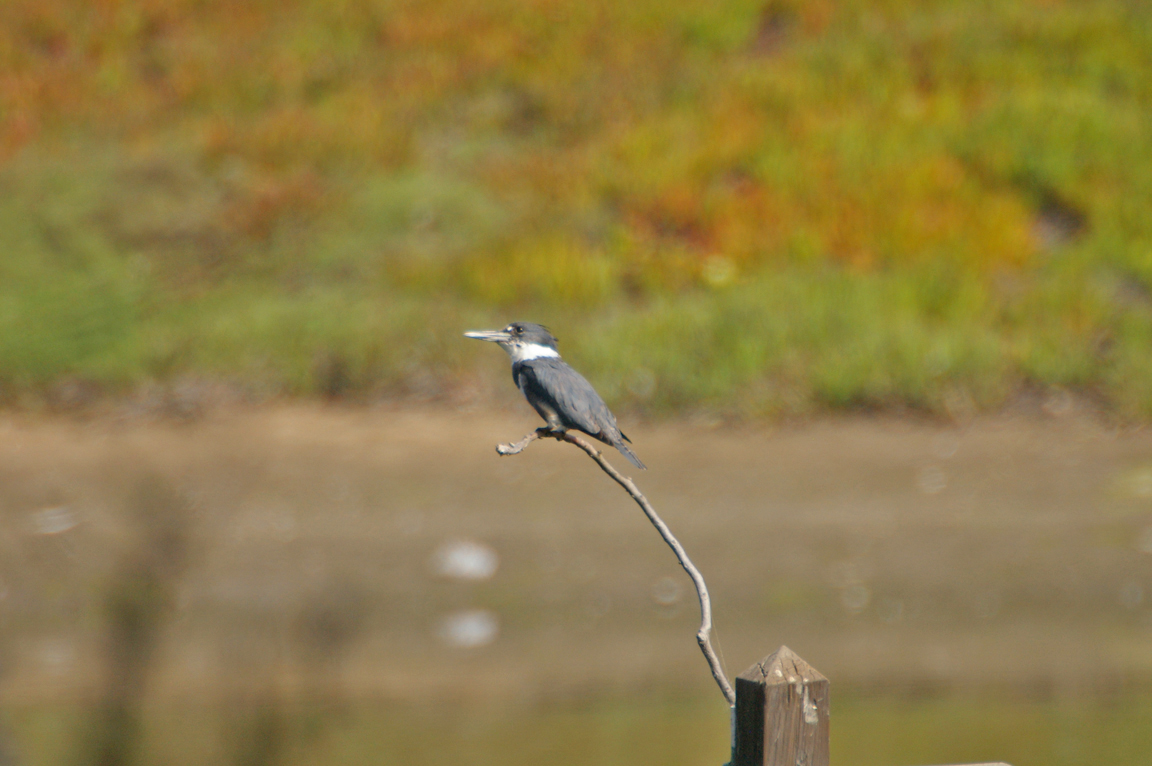|
|
|
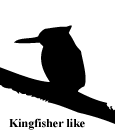 |
Belted Kingfisher
|
| Ceryle alcyon | |
A common waterside resident throughout North America, the Belted Kingfisher is often seen hovering before it plunges headfirst into water to catch a fish. It frequently announces its presence by its loud rattling cry.
Interesting Information
-
The breeding distribution of the Belted Kingfisher is limited in some areas by the availability of suitable nesting sites. Human activity, such as road building and digging gravel pits, has created banks where kingfishers can nest and allowed the expansion of the breeding range.
-
The Belted Kingfisher is one of the few bird species in which the female is more brightly colored than the male. Among the 93 species of kingfishers, the sexes often look alike. In some species the male is more colorful, and in others the female is.
-
During breeding season the Belted Kingfisher pair defends a territory against other kingfishers. A territory along a stream includes just the streambed and the vegetation along it, and averages 1 km (0.6 mi) long. The nest burrow is usually in a dirt bank near water. The tunnel slopes upward from the entrance, perhaps to keep water from entering the nest. Tunnel length ranges from 30 to 250 cm (1 to 8 ft.
Description
Adult Description
-
Length Range: 28-37 cm (11-14.5 in)
-
Weight: 147 g (5.2 oz)
-
Size: Medium (9 - 16 in)
-
Large head and shaggy crest.
-
Large, thick bill.
-
Bluish head and back.
-
White throat and collar.
-
White underneath with blue breast band.
Sex Differences
Male Description
Belly white, without rufous band. May have rufous flanks and some reddish in blue chest band.
Female Description
Rufous flanks and band across chest below the blue band. Rufous tips to feathers in blue chest band.
Immature
Immature like adult, but immature male has incomplete rufous chest band.
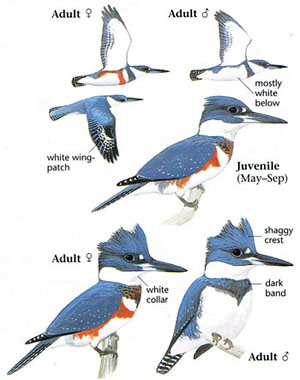
Photo taken from: The Sibley Field Guide by David Allen Sibley
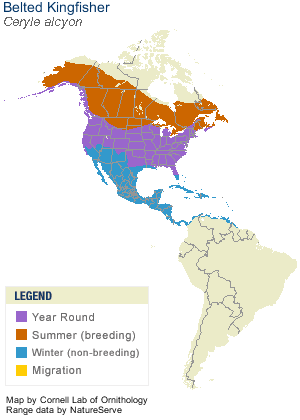
© 2003 Cornell Lab of Ornithology
|
Habitat |
|
|
Behavior |
|
Watches in clear water from perch or while hovering, plunges into water headfirst to catch prey in bill. Pounds prey on perch to kill it. |
|
Food |
|
Fish. Also aquatic invertebrates, insects, and small vertebrates. |
Taxonomy
| Kingdom: | Animalia |
| Phylum: | Chordata |
| Subphylum: | Vertebrata |
| Class: | Aves |
| Order: | Coraciiformes |
| Family: | Alcedinidae |
| Genus: | Ceryle |
| Species: | Ceryle alcyon |
Similar Species |
|
|
Bird Sound |
|
Call a loud, harsh rattle. |
|
Eggs look like this |
|
Photo taken from: ARCTOS Collaborative Collection Management Solution |
